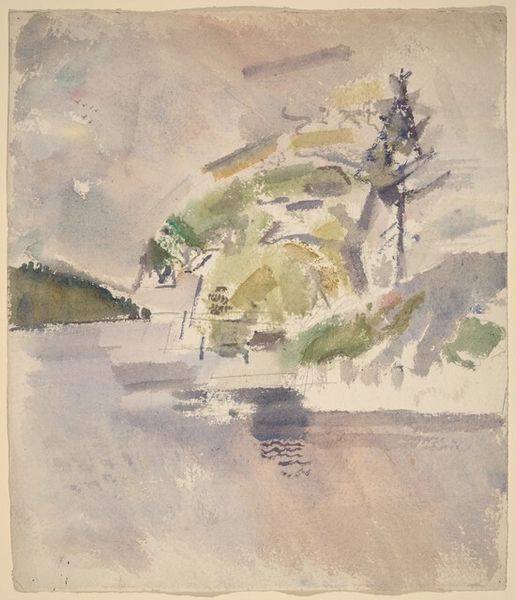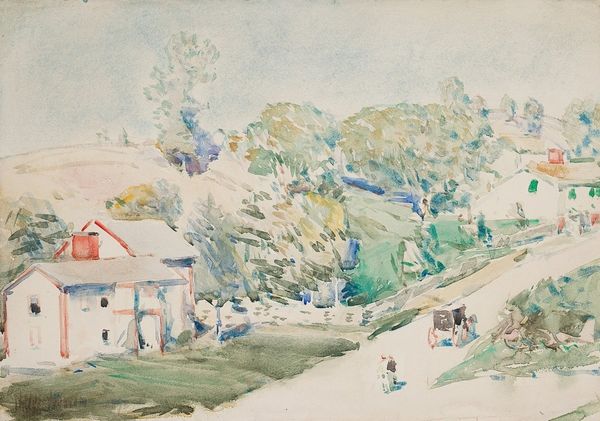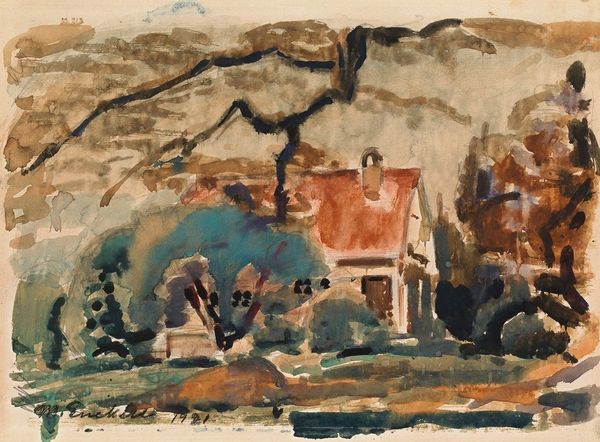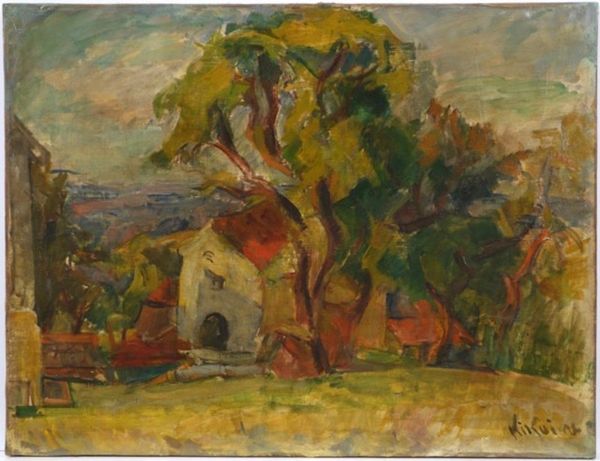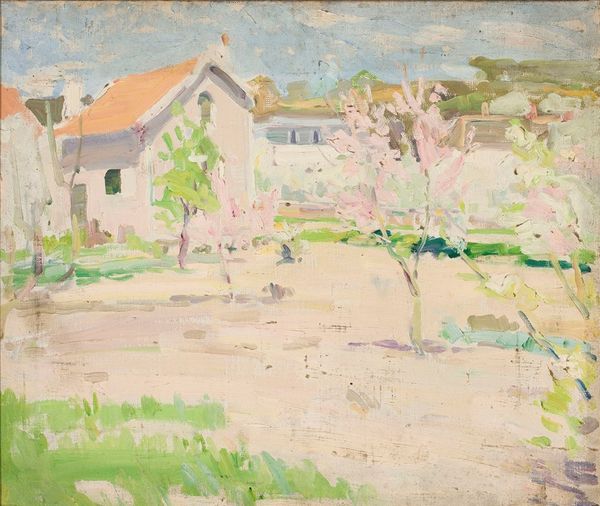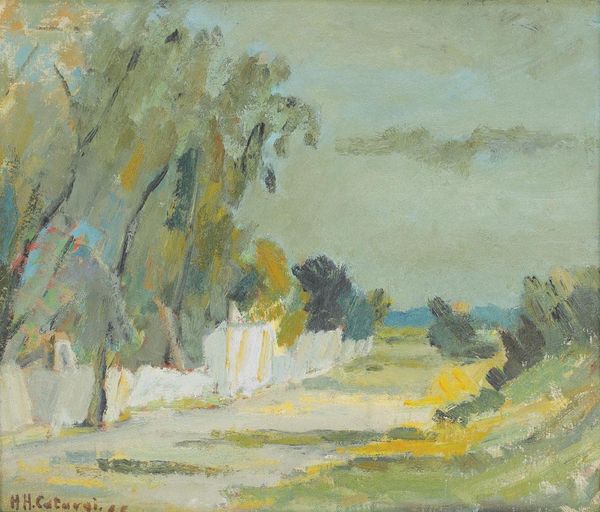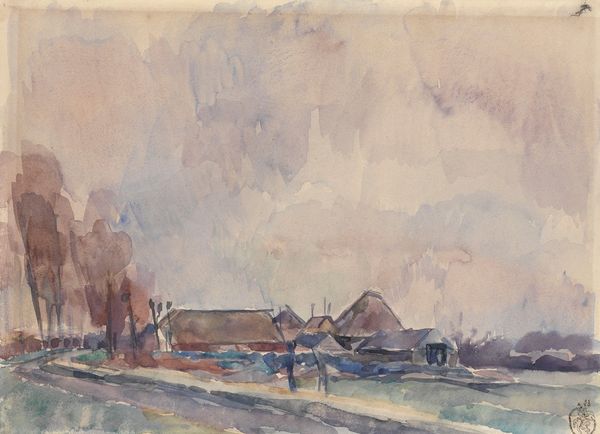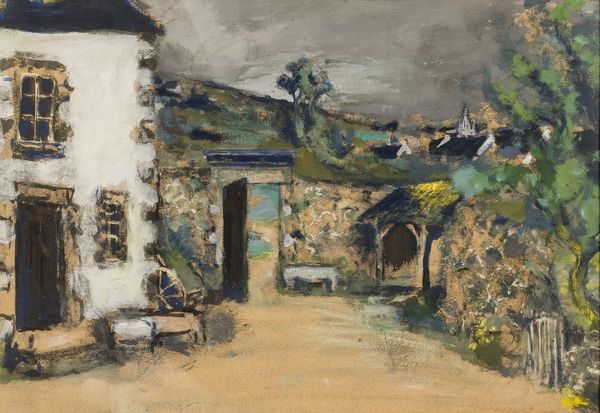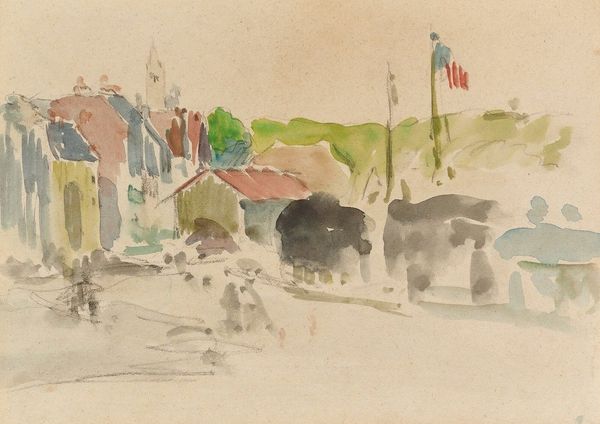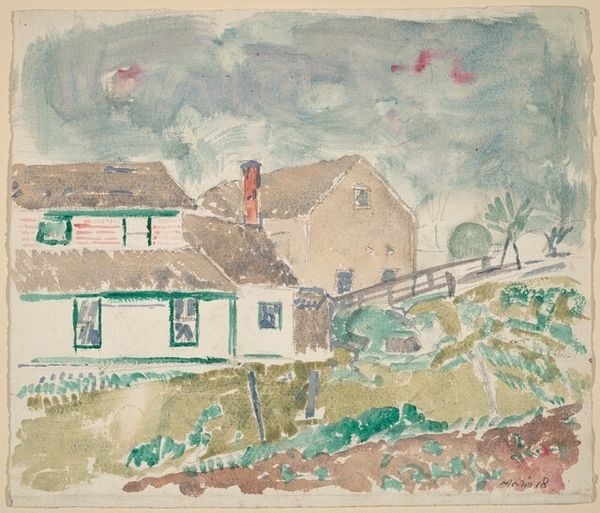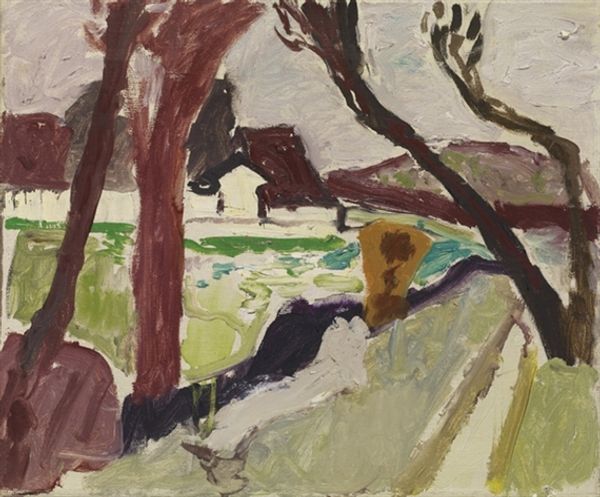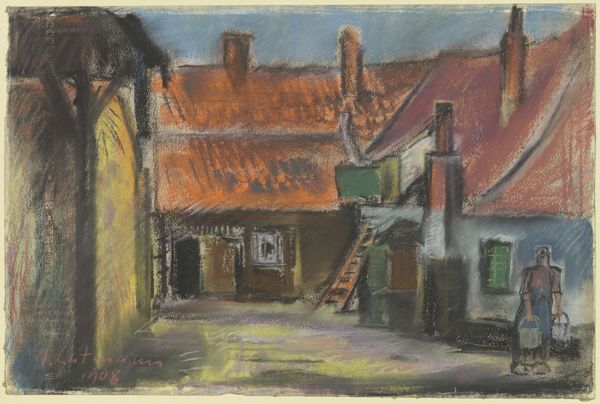
drawing, painting, paper, watercolor
#
drawing
#
painting
#
landscape
#
paper
#
watercolor
#
water
#
cityscape
#
watercolor
#
realism
Dimensions: 241 × 343 mm
Copyright: Public Domain
Curator: Welcome. We are standing before "Ightham Mote, Kent," a watercolor and drawing on paper, believed to be painted by Hercules Brabazon Brabazon. The piece currently resides here at The Art Institute of Chicago. Editor: Right away, I'm hit by the tranquil vibe. It’s soft, almost dreamlike. The color palette is muted, watery. It feels like a memory. Curator: It is interesting that you describe it as memory. This reminds me about the writings of Gaston Bachelard concerning "the poetics of space" and how the home is a container for our memories and lived experiences. Perhaps Brabazon is hinting at the colonial gaze that so many wealthy Britons like himself had toward their familial land. Editor: Mmm, the colonial gaze is present perhaps in the way he chose to depict it. Didactic and distant. Personally, though, the home feels cozy; and with the technique, fleeting. Like capturing a whisper before it’s gone. There's something so honest about watercolors, aren’t they so incredibly revealing. Curator: That vulnerability of the watercolor as a medium can be tied to class and gender. Watercolors have often been dismissed as feminine and amateur, thus less important. However, watercolors allowed Victorian women to artistically express themselves and engage with new political concepts in an era when their societal roles were severely constrained. Brabazon certainly would have known that context and that association. Editor: Totally, a sly commentary maybe. Plus, landscape as genre—is that an endorsement of the landed gentry and ownership? I'm seeing it now...but on the flip, perhaps it’s an attempt at dissolving those old power structures by depicting a scene as ethereal. Curator: That's interesting. To further elaborate that argument one must account for class politics that permeated English society from this period of rapid industrial change. How is this nostalgic gaze on landscapes indicative of wealth and power structures? Brabazon isn't outside the equation but within it. Editor: Food for thought...okay, I’m seeing it as both an endorsement and a quiet questioning. Thanks for making me see this work so differently. Curator: My pleasure. Thinking about art in all of its complicated historical intersections can offer us new ways to approach our relationship with art in our contemporary moment.
Comments
No comments
Be the first to comment and join the conversation on the ultimate creative platform.

